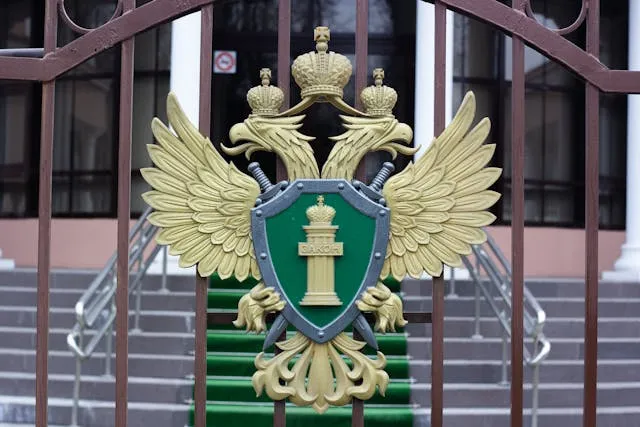For centuries, Thor’s Hammer has stood as one of the most recognizable symbols of Norse mythology. Known as Mjölnir in Old Norse, this sacred weapon was carried by Thor, the thunder god, protector of gods and humans. From ancient sagas to modern-day pop culture, Thor’s Hammer has represented strength, courage, and divine protection. Its journey through history highlights its lasting importance as both a spiritual emblem and a cultural icon.
Read more: What To Consider When Selecting A Restaurant In Inner West?
Origins of Thor’s Hammer in Norse Mythology
In Norse mythology, Thor’s Hammer was crafted by the dwarves Brokkr and Sindri. According to the myths, it was so powerful that it could crush mountains and defeat giants with a single strike. The hammer was not just a weapon—it was also a sacred tool used to bless marriages, consecrate rituals, and protect communities.
For the Vikings, Thor’s Hammer symbolized the eternal fight against chaos and evil. It was a divine reminder that even in the harsh and unpredictable world of the North, the gods provided protection and order.
Symbol of Power and Authority
Thor was one of the most beloved gods of the Norse pantheon, and Mjölnir was a symbol of his unmatched might. Legends describe how Thor wielded the hammer to maintain balance in the cosmos, defending gods and humans alike from giants who threatened their existence.
The hammer was also associated with fertility and prosperity. Rituals conducted with the symbol of Thor’s Hammer were believed to ensure good harvests and the continuation of family lines. This dual role—both destructive and protective—made it one of the most versatile symbols in Norse tradition.
Viking Age Amulets and Personal Protection
During the Viking Age, thousands of miniature Thor’s Hammer amulets were worn by warriors, farmers, and travelers. These pendants acted as protective charms, shielding individuals from harm and invoking Thor’s blessing in daily life.
Archaeological discoveries across Scandinavia and beyond have revealed that these amulets were not just ornaments but deeply spiritual objects. Worn around the neck, they symbolized strength and resilience, offering a sense of safety in both battle and voyage.
Even today, modern replicas of these amulets are popular, continuing the tradition of using Thor’s Hammer as a personal symbol of protection and courage. For modern variations and symbolic items inspired by this myth, people often explore resources such as hammerof-thor.com.
A Spiritual Counter to Christianity
As Christianity spread through Northern Europe, Thor’s Hammer gained new meaning as a cultural resistance symbol. While Christians wore crosses, many Norse pagans wore hammer amulets as a way to hold on to their ancestral faith.
This clash of symbols highlighted the tension between the old gods and the new religion. Yet, despite the decline of Norse paganism, the hammer persisted as a sign of cultural identity. It was more than just a relic of mythology—it was a statement of heritage and defiance.
Thor’s Hammer in Modern Culture
The influence of Thor’s Hammer extends well beyond mythology. In modern times, it has become a popular icon in literature, film, and art. The Marvel Comics and Marvel Cinematic Universe reintroduced Thor and Mjölnir to a global audience. In these portrayals, the hammer retains its themes of worthiness, strength, and protection, reinforcing the timeless nature of the symbol.
Outside of pop culture, Thor’s Hammer is used as a sign of faith by modern followers of Norse paganism, also known as Heathenry or Ásatrú. For them, the hammer is a sacred emblem of devotion to the old gods and a reminder of ancestral traditions.
Symbolism of Protection Across Eras
The power of Thor’s Hammer lies not just in mythology but in its symbolic meaning that has evolved through time.
- In the Viking Age, it was a personal charm of strength and security.
- In medieval times, it became a mark of resistance against conversion to Christianity.
- In the modern world, it has resurfaced as both a cultural emblem and a spiritual icon.
This continuity shows how symbols adapt while retaining their essence. Thor’s Hammer has consistently represented protection, resilience, and authority, making it a universal symbol that transcends eras.
Thor’s Hammer in Archaeology and History
Archaeologists have uncovered countless examples of Thor’s Hammer amulets across Scandinavia, England, and parts of Eastern Europe. These finds confirm its widespread significance during the Viking Age. Some were intricately carved from silver, bronze, or iron, while others were made of simple stone, showing that people of all social classes revered the symbol.
Inscriptions found on some artifacts also reveal prayers or blessings connected to Thor’s Hammer, emphasizing its use not only as a talisman but as a tool of ritual significance.
The Enduring Legacy of Thor’s Hammer
Today, Thor’s Hammer continues to inspire. Whether worn as jewelry, tattooed on the body, or displayed as art, it carries deep symbolic meaning. For many, it is a personal reminder of inner strength and the ability to overcome challenges. For others, it is a cultural emblem connecting them to Norse heritage and tradition.
The hammer’s legacy endures because it embodies values that are universally admired: power, courage, and protection. In an uncertain world, the reassurance of Thor’s strength still resonates with people across cultures.
Conclusion
From its origins in Norse mythology to its role in modern spirituality and popular culture, Thor’s Hammer has remained a timeless symbol of power and protection. It represents not only the might of the gods but also the enduring spirit of those who wear it.
Whether seen as a sacred relic, a cultural emblem, or a pop culture icon, Thor’s Hammer continues to inspire strength, resilience, and courage. Its journey through history proves that symbols of protection never lose their relevance—they only grow stronger with time.



